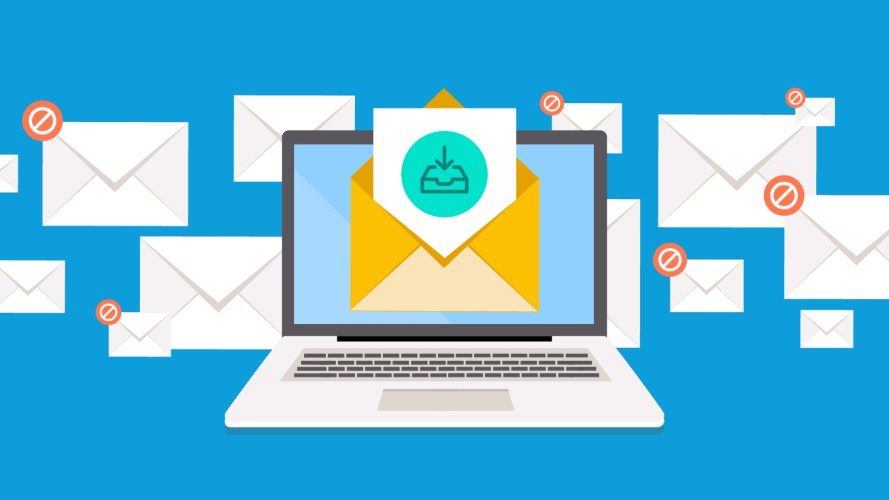The Guide to Email Deliverability: Tools and Best Practices

Nurturing an ongoing relationship between you and your email recipients is crucial for great marketing. But how do you best manage them for long term success? Let’s take a look.

Michael Wright
The inbox: If you can make it there, you can make it anywhere in email marketing. When brands send messages to a large audience, they must navigate rules intended to protect users from getting a lot of spam. Strong email deliverability tactics determine the success businesses have in making sure their readers see and open their messages.
Let’s look at the factors that impact email deliverability and the best practices for making sure your emails get where they need to go.
Table of contents
- What is email deliverability?
- What factors affect email deliverability?
- How should you test and monitor email deliverability?
- What are 4 best practices for improving email deliverability?
- What are the best email deliverability tools and services?
Build your deliverability strategy now
In this free webinar, our experts will walk you through key email deliverability terms, core strategies, and how to make sense of the metrics.



What is email deliverability?
Email deliverability is the ability to deliver emails to your subscribers’ inboxes. It’s also a standard performance metric used to evaluate email marketing effectiveness and subscriber engagement.
Maintaining high email deliverability is crucial because it directly influences your chances for higher customer engagement – not to mention it lends itself to favorable sender reputation over time. The main objectives of good email deliverability is to reach the inbox by minimizing spam flags, reducing bounce rates, and effectively managing complaints.
All that might be true, but it’s still not without its challenges. Popular email service providers Yahoo and Gmail recently announced new measures to help prevent spam from reaching readers’ inboxes. This means they will require new domain validation requirements for bulk email senders. Avoiding the spam filter should be top-of-mind as you set up your delivery systems.
“A conversion comes after a click, a click comes after an open, an open comes after delivery,” said Tim Kauble, senior director of deliverability & compliance operations at Salesforce. “If you focus on optimizing for delivery, you inherently maximize your opportunities for ROI.”
What factors affect email deliverability?
Your email deliverability depends on how you set up, connect, and curate your message cycle. Let’s explore the many factors that can influence just how your mail can reach the inbox of your email subscribers.
The most important factor? Your reputation. No one likes spam. And the way you get authenticated as a proper sender of compliant mail is by following certain authentication protocols:
SPF (Sender Policy Framework)
SPF is an email authentication method that allows the domain owner to specify which mail servers are authorized to send emails on behalf of their domain. It works by publishing a DNS (Domain Name System) record that lists the authorized mail servers.
DKIM (DomainKeys Identified Mail)
DKIM is an email authentication technique that adds a digital signature to the email message’s header. This signature is generated using a private key held by the sender and can be verified by recipients using a public key published in the sender’s DNS records. DKIM helps verify the integrity and authenticity of the email.
DMARC (Domain-based Message Authentication, Reporting, and Conformance)
DMARC is an email authentication and reporting protocol that builds on SPF and DKIM. It allows domain owners to set policies specifying what action receivers should take if an email fails authentication. DMARC also provides reporting mechanisms to send feedback to domain owners about the authentication results of their emails.
If you send more than 100,000 emails a month (either in a single account or across your enterprise), you’ll need a dedicated IP address. This allows you to control the reputation of your sending IP(s). You may need multiple dedicated IPs if you’re a high volume sender.
Your IP and domain reputation management is crucial in email deliverability. A positive sender reputation signals to email service providers that the sender is legitimate and trustworthy, resulting in higher chances of successful email delivery. A poor reputation can lead to emails being filtered out, undelivered, or marked as spam.
Your sender reputation is influenced by a lot of different factors. For example, when you focus on a permission-based sending practice where your subscribers have decided to opt-in, you establish trust with both recipients and email service providers.
When you engage with your audience regularly, you’re more likely to connect with their expectations and interests. Authentication protocols (SPF, DKIM, and DMARC) add layers of security, contributing to a positive sender reputation. And to safeguard your reputation, be prompt in your review of any abuse reports provided by email service providers — and address them fast.
How should you test and monitor email deliverability?
It’s also important to know about the tools available for testing and monitoring your email deliverability. For example, GlockApps, Sender Score, and 250ok can provide insights into how emails are likely to be treated by spam filters and mailbox providers (MBPs).
Tools like Litmus and Email on Acid are email preview services that enable testing email content across various email clients, devices, and browsers. Services such as SpamAssassin and IsNotSpam simulate spam filter behavior to identify potential issues in email content.
MBP feedback loops (FBLs) are mechanisms that allow subscribers to click on the “report spam” or “this is spam” button in their email client, which tells their MBP that they find a given email message to be unwanted. Subscribing to feedback loops provides alerts on subscriber complaints.
A seed email address is a predetermined email address that you use for testing and monitoring purposes. Using seed email addresses across different MBPs to monitor inbox placement and appearance helps assess deliverability.
Now that you’re tooled up, how do you test email deliverability performance?
Analyzing key performance indicators (KPIs) is key for sustained email delivery success. You want to monitor metrics like click-through rates, bounce rates, and spam complaints. You’ll also want to look for sender score and inbox placement rates.
If deliverability issues are detected, research why and take action. Is it content related? Is it an authentication problem? Is it a sender reputation issue? You can gain insight using tools like Google Postmaster Tools and Microsoft SNDS solutions. These are dashboards offered by the respective MBP that give insight into send volumes to their platform and show a sender how they “score” specific to that domain or MBP.
Optimize content by cleaning up your subscriber list, resolving authentication issues, and addressing complaints. Identifying trends – or anomalies – in your metrics and comparing them against industry benchmarks is an ongoing activity. Constantly monitoring your email deliverability, and making the necessary adjustments, can generate long-term improvements.
What are 4 best practices for improving email deliverability?
Unsubscribing to emails you never asked for is a maddening chore. You’ll add value and enhance deliverability if you respect subscriber preferences and manage your list hygiene. Here’s how:
- Have a clean email list. Do this by getting consent from subscribers through transparent opt-in practices. You can even implement double opt-ins to ensure the quality of sign-ups. Regularly clean the list by removing inactive or bounced email addresses. To that end, you can also create re-engagement campaigns for dormant subscribers.
- Deliver relevant and personalized content. This means crafting compelling subject lines and email content, perhaps using A/B email testing to discover user preferences. Apply segmentation strategies to tailor messages to specific audience segments based on their behaviors. You can use artificial intelligence (AI) to help with this.
- Establish a preference center. This is where subscribers can choose the type and frequency of emails they receive. Letting your users dictate the terms of their own engagement instills good faith.
- Don’t be excessive. Be cautious with overly promotional language – and its overuse. This can mean balancing a mix of text and images, and including clear and easy-to-find unsubscribe links. (Excessivity applies to all of the above – no one likes messages that are too much of anything – especially too lengthy or frequent.)
What are the best email deliverability tools and services?
Email deliverability tools and services include features for monitoring sender reputation, analyzing email content for potential spam triggers, checking authentication protocols (SPF, DKIM, DMARC), and providing insights into inbox placement rates.
When selecting an email service provider (ESP), prioritize ones with a proven track record in maintaining high deliverability rates. Look for features such as robust authentication protocols, dedicated IP options, and comprehensive analytics to monitor and improve sender reputation.
Email deliverability is an always-on process. Stay on top of it, and your ESP – not to mention your audience – will reward you.
Make sure your emails reach their destination
Learn how Marketing Cloud Engagement integrates all of your campaigns and manages your email sender score with a single platform.






























